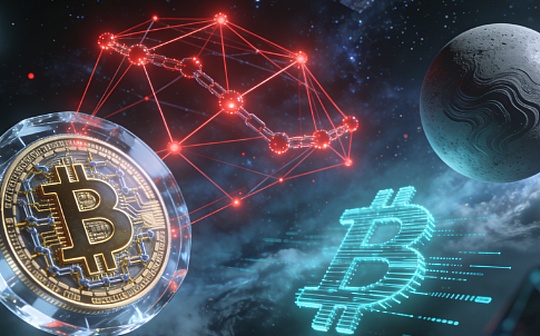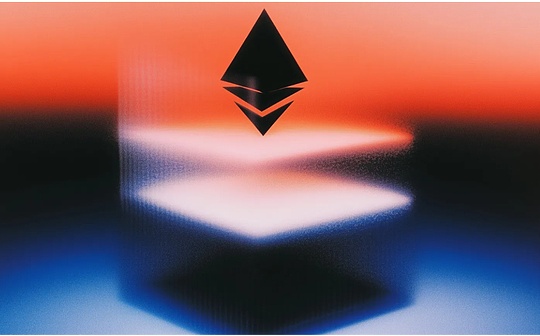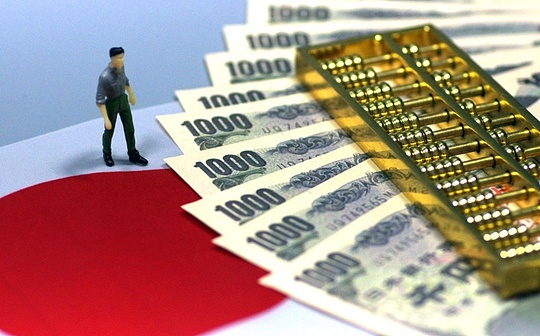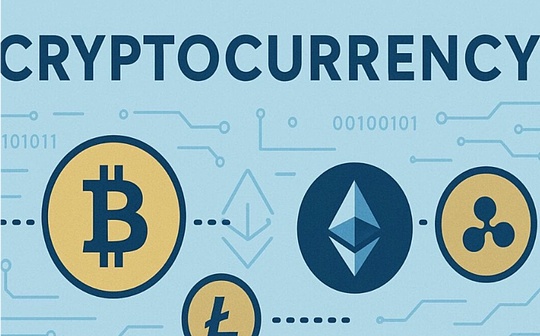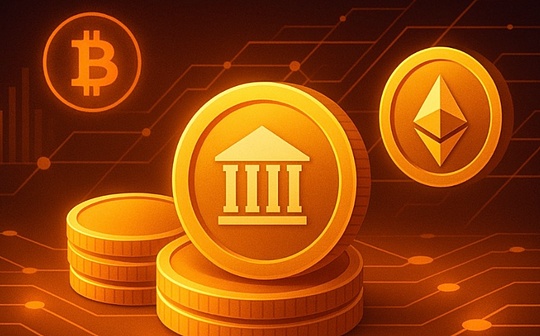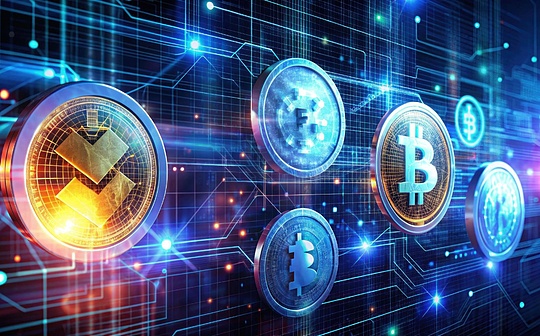
Author: Fu Shaoqing, SatoshiLab, Island of All Things BTC Studio
1. Preface
Not only the VC currency and meme currency phenomena have caused more thoughts, but many well-known people in the industry have also raised similar questions and are striving to find solutions.For example, in He Yi’s Twitter Space activity on Best Friend Coin, Jason (Chen Jian) raised the question of whether the Token launched by Binance has a mechanism to solve the problem of selling coins and then lying flat on the project team.There is also the recent CZ published “A Crazy Idea for Token Issuance” that is trying to find solutions to related problems.
I think all teams that are really working hard to do projects hope that the market will reward real contributors, rather than let Ponzi, scammers, speculators, etc. take away the dividends of this industry and disrupt the development of this industry.
Because VC coins and meme coins have a good case analysis effect, this article will analyze these two phenomena.
2. The past and present life of VC coins
VC coins were not produced out of thin air. Its appearance has historical reasons. Although VC coins now look imperfect, it also played a relatively important role at the beginning, and important projects in the industry are involved in VC.
2.1. The chaos of ICO in 2017 – The Devils Dance
2017 was a critical year for the outbreak of the initial token issuance (ICO) in the blockchain field. According to statistics, the ICO financing amount exceeded US$5 billion that year.In addition to the classic ICO project introduced below, the author also participated in ICOs of some small projects, completely feeling the madness at that time, and it is not an exaggeration to describe it as a group of demons dancing.At that time, as long as the token of a project was to conduct an ICO, someone would stand up and write the white paper well. If it was thrown into some groups, it would be robbed immediately.People were crazy and irrational at that time.To be exaggerated, even if you throw a piece of shit into the group, you will be robbed crazy.If you don’t believe it, please search for the token status of MLGB (Malego Coin).(This also reflects the powerful power of ICO)
forCauses of the outbreak, Through my communication with DeepSeek and Chatgpt, as well as my own understanding, I summarized it as follows:
(1) The coin issuance technology is mature: In particular, the launch of Ethereum has enabled developers to easily create smart contracts and decentralized applications (DApps), which has promoted the rise of ICO.
(2) There are several other reasons: market needs, the concept of decentralization has just begun to fall into people’s hearts, giving people good expectations, and low-threshold investment.
During this periodSeveral classic cases
(1) Ethereum: Although Ethereum’s ICO was conducted in 2014, Ethereum’s smart contract platform was widely used in ICO for many new projects in 2017, and this project was also carried out through ICO.Overall, this project is still very good, and now it has grown into the second place in the world of Crypto.
(2) EOS: EOS raised nearly US$4.3 billion through one-year and phased ICOs in 2017, becoming one of the largest ICOs of the year.This project has almost disappeared now. On the one hand, the technical route has not been taken correctly, and on the other hand, the market demand is not controlled enough.
(3) TRON: TRON’s ICO in 2017 also raised a large amount of funds. During the period, the exchange of coins and plagiarism and other projects were popular, but the subsequent development was rapid and attracted a lot of attention.From this point of view, is Brother Sun doing quite well compared to those projects that ran away?He has a very accurate grasp of market demand, such as Tron’s stablecoin income.Tron forms a strong contrast with EOS from the control of technology implementation and market demand.Tron’s development results are quite good. If the HSR (HShare, nicknamed braised pork) who exchanged coins, left the share of Tron’s coin exchange, the profit would be higher than his own project.
(4) Filecoin: Filecoin successfully raised more than US$250 million in 2017. Its concept of distributed storage has attracted widespread attention. The team composed of Juan Bennett and others in the Creation team is relatively luxurious.This project cannot be said to be successful or failed, but whether its project can develop healthily is a question.
The author personally feels that there are more non-classic cases and they have a greater impact, which is also a great historical reason for the emergence of VC coins.
Exposed problems
(1) Lack of regulation: Due to the rapid development of the ICO market, many projects lack supervision or are not regulated at all, resulting in high risks for investors.There are many frauds and Ponzi scams, and almost 99% of the projects have exaggeration and fraud.
(2) Market bubble: A large number of projects raise huge amounts of funds in the short term (these funds are not well managed), but many of them lack actual value or described scenarios are completely unavailable, which makes even projects that do not want to be scammed and run away or fail.
(3) Inadequate Investor education, it is difficult to judge: Many ordinary investors lack understanding of blockchain and cryptocurrencies, and are easily misled, leading to investment decision-making mistakes.Or investors have no way to measure the project or supervise the progress of the project afterwards.
2.2.VC entry and reputation endorsement
Through the above description, we see the chaos after ICO. At this time, venture capital (VC) first came forward to solve the problem. VC provided more reliable support for the project through its own reputation and resources, helping to reduce many problems brought about by early ICO.At the same time, an additional effect is to help the majority of users to perform a layer of screening.
The role of VC
(1) Grassroots financing defects that replace ICO
-
Reduce fraud risk: VC passes “Strict due diligence”(Team background, technical feasibility, economic model) Filter “air project” to avoid the spread of white paper fraud in the ICO era.
-
Standardization of fund management: adopt phased capital injection (appropriation by milestone) and token lock-up period clauses to prevent teams from cashing out and running away.
-
Long-term value binding: VC usually holds project equity or long-term locked tokens, which is deeply bound to project development and reduces short-term speculation.
(2) Empower the project ecology
-
Resource import: It connects key resources such as project docking exchanges, developer communities, compliance consultants (such as Coinbase Ventures to help project list coins).
-
Strategic guidance: Assist in designing token economic models (such as token release mechanisms) and governance structures to avoid collapse of the economic system.
-
Reputation endorsement: The brand effect of well-known VCs (such as a16z, Paradigm) can enhance market trust in projects.
(3) Promote industry compliance
VC promotes projects to actively comply with securities laws (such as Howey Test in the United States), adopts compliant financing frameworks such as SAFT (Simple Agreement on Future Tokens) to reduce legal risks.
VC’s intervention is one of the most direct solutions to the early ICO model problem.Overall, VC plays a crucial role in the success of the Web3 project. Through funding, resources, reputation and strategic guidance, it helps the project overcome many challenges faced by early ICOs, and indirectly helps the public complete preliminary screening.
2.3. VC Coin Problem
New things appear to solve some old problems, but when this new thing develops to a certain stage, it begins to present a series of problems itself.VC Coin is such a case, and later it showed many limitations
Mainly reflected in:
(1) Conflict of interest
VC is an investment institution that makes profits through investment.It may promote excessive tokenization of projects (such as high unlocking of selling pressure) or prioritize service to its own portfolio (such as exchange VC supporting “child” projects).
(2) Inability to solve the problem of subsequent project development.
(3) Conspire with the project party to deceive retail investors (it is part of the project party and VC that operates like this, and the VC of big brands is relatively good).
VC institutions only complete the early investment and profit-making exit links. On the one hand, they have no obligation to develop the project in the later stage, and on the other hand, they have no ability and no intention to do so.(Will it be better if the VC is restricted to the long unlocking period?)
The main problem with VC coins is that after the project party’s coins are listed, they lack the motivation to continue to build. VC and project parties will cash out and run away after they are listed.This phenomenon makes retail investors hate VC coins very much, butThe essential reason is that the project cannot be effectively supervised and managed, especially the matching of funds and results.
3. Fairlanunch and memecoin phenomena of inscriptions
The inscriptions and Fairlanunch that broke out in 2023, and the pumpfun mode of memecoin that broke out in 2024 both revealed some phenomena and exposed some problems.
3.1. The explosion of the inscription and Fairlanunch
In 2023, two significant trends emerged in the blockchain field: the explosion of Inscriptions technology and the popularization of the Fair Launch model.Both phenomena are derived from reflections on early financing models (such as ICO and VC monopoly). In the field of inscriptions, most VCs generally report that they do not have the opportunity to participate in the primary market, and they dare not invest too much even in the secondary market.This reflects the users and the community’s pursuit of decentralization and fairness.
The inscription first broke out on the Bitcoin blockchain, represented by BRC 20, and produced important inscriptions such as ORDI and SATS.There are some reasons for the outbreak of the inscription: the need for innovation in the Bitcoin ecosystem; the need for users to resist censorship and decentralization; low thresholds and wealth effects; resistance to VC coins; the attraction of fair launch.
The inscription also creates some problems:
-
pseudo-fairness,In fact, the numerous participation addresses may also be disguised by a few institutions or large-scale investors;
-
Liquidity problems,There are large transaction costs and time costs for the use of inscriptions on the Bitcoin main network;
-
Value loss,The huge handling fees generated by creating inscriptions were taken away by miners (the anchor assets were lost), and they did not empower the closed loop of this Token ecological;
-
Application scenario problems,Inscriptions do not solve the problem of continuous development of a Token, and these inscriptions do not have “useful” application scenarios.
3.2. The outbreak of Pumpfun and the memecoin phenomenon
Meme originated relatively early, and it was a cultural phenomenon in the early days.The real world takes the concept of NFT proposed by Hal Finney in 1993 as its earliest origin.What drove NFT was Counterparty founded in 2014. Based on the Rare Pepes, it created, turned the popular meme, sad frog into an NFT application.meme is translated as a meme, which is equivalent to an emoticon, a sentence, or even a video or animated picture.
As Meme has emerged in the NFT field, and as some technologies mature, memecoin has begun to form.In 2024, the Pump.fun platform based on the Solana chain rose rapidly and became the core position of memecoin distribution.The platform has a significant impact on memecoin in 2024 through a simple and complete token service process (ICO+LP+DEX) and speculation mechanism.The author believes that the important contribution of Pumpfun is that the platform combines three separate services into a complete closed loop:The issuance of Token, building a liquidity pool, and going to the decentralized exchange Dex.
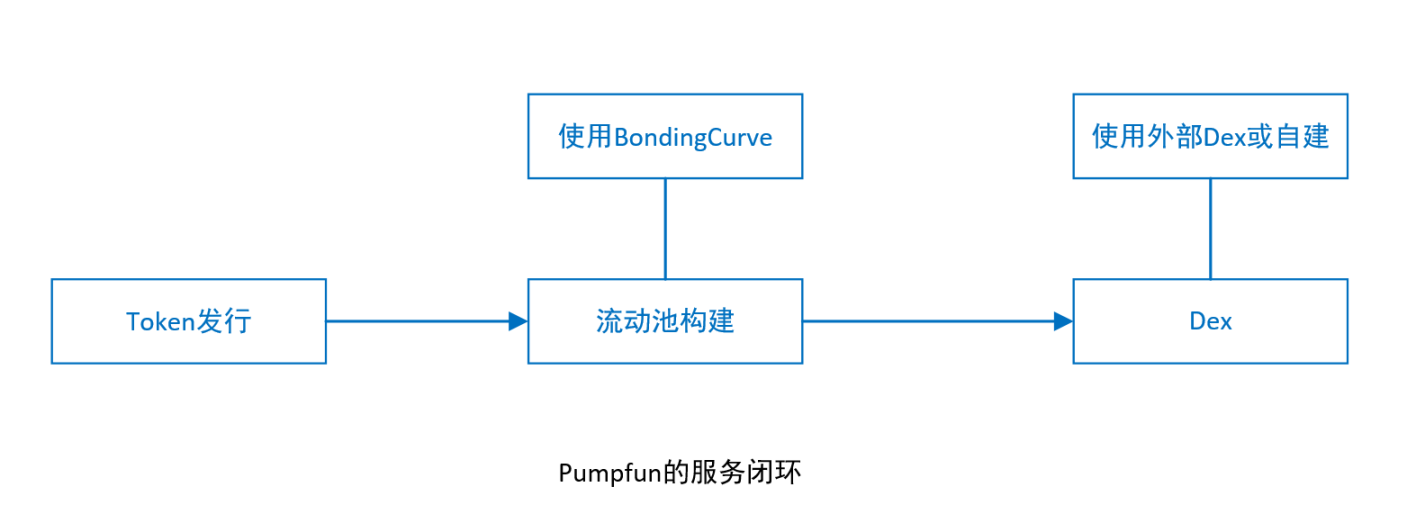
The proportion of dex on Token on early pumpfun (called graduation rate in the industry) was very small, only 2%-3%, which also shows that the early entertainment functions were higher than the trading functions, which also conformed to the characteristics of meme.But later, at its peak, the Token graduation rate often reached more than 20%, becoming a pure hype machine.
An analysis data on Twitter also well illustrates the problem of the memecoin model.(The author has not confirmed the reliability of this data)
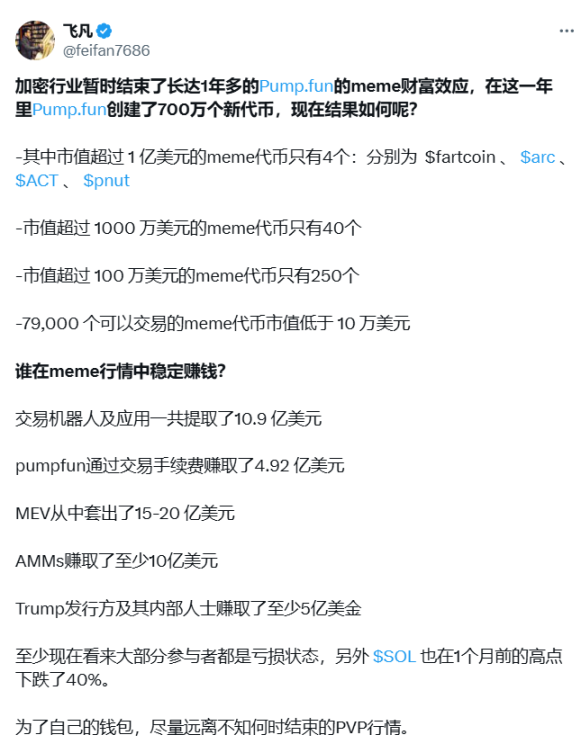
Pumpfun’s total revenue is close to US$600 million, so that US President Trump and his family also issued their own tokens, indicating the outbreak and climax of memecoin.According to Dune’s above analysis, memecoin is also experiencing a cycle from generation to growth to explosion.

The main issues of memecoin
(1) Systematic fraud and trust collapse: According to Dune data, about 85% of tokens on Pump.fun are scams, and the average cash-out time of the founder is only 2 hours.
(2) False propaganda is rampant: the project party forged KOL platform and forged transaction volume (through order brushing robots). For example, the token MOON claimed to have been endorsed by Musk, but it was actually a PS fraud.
(3) Market ecology distortion: liquid siphon effect, memecoin occupies a large amount of on-chain resources, squeezing normal project development space (such as Solana on-chain DeFi protocol TVL decreases by 30%).These resulted in real users being expelled, and ordinary investors gradually exited the market because they were unable to fight against Bot and insider trading.Some project teams even have the idea of using the investment funds they have obtained to run a memecoin and arbitrage to run away.
memecoin developed from its early entertainment function to its mid-to-late PVP (Player versus Player), and later developed into PVB (Player versus Bot), becoming a tool for a few experts to harvest retail investors.Memecoin has never had an effective value injection, which is a serious problem. If this problem is not solved, memecoin will eventually decline.
4. What kind of projects do users or markets want?
By reviewing the development history of the Web3 project, we understand the historical reasons and advantages and disadvantages of the emergence of VC coins, and also briefly analyze the inscriptions and the memecoin phenomenon promoted by pumpfun.They are all products of the development of this industry. Through these analyses, we see that there are still some key issues in the development of web3 projects.
Note: Do VC coins and meme coins reveal all the problems?Or revealing the main current problem?
4.1. Summary of existing problems
We summarized the problems of the current Web3 project from the previous content:
1. The project should have continuous construction motivation.No one can get too much money too early. Users holding tokens and subsequent construction must receive continuous rewards, rather than crackdowns and deceptions.
2. Eliminate or reduce PVP,To a large extent, it is more fair, reducing the dealer’s operations, so the real fair launch is more important, but after entering the dex, the race still runs faster, because the value of the pool is fixed, and more people get it early.
How to solve the above problem:
1. Project management issues:Do not allow project parties or VCs to obtain large amounts of funds too early, or use funds under regulatory conditions, or allocate funds to teams that make contributions and construction.
2. Sustainable external value injection:This can solve the PVP problem and reward medium and long-term Token holders and builders.Continuous external value injection can provide financial support to the project parties that are actually to be built, and can also allow Token holders to have medium- and long-term growth expectations, and can also reduce the problem of cashing out too early and running away.
This simple conclusion is not easy to describe the problem clearly. For project management issues, it is necessary to analyze the stakeholders in a project ecosystem, and it is also necessary to dynamically analyze possible problems from different stages of the project (issuance, circulation, governance).
4.2. Management issues of different stakeholders and different links of the project
1. Different stakeholders
The most relevant part of the Web3 project is its economic model design.Stakeholders in the project generally includeParticipants in project teams, investors, foundations, users and communities, miners, exchanges, market makers or other project ecological partners.An economic model is needed to plan the token allocation and contribution incentives to different stakeholders at each stage.The economic model generally includes the proportion of tokens allocated to stakeholders, the rules of release of tokens, the methods of incentives, etc.The specific proportions and release rules will be determined based on the actual situation of each project and the degree of contribution of each stakeholder, and there is no fixed value.There is also a group of bystanders outside the project (speculators, hair-pulling studios, liars,…).

Among different interest groups, it is necessary to prevent a certain stakeholder within the ecosystem from taking away too much interests. For example, in the VC coin project, the project team and investors took away most of the value of the Token, and there is no continuous construction motivation in the later stage, and it is also necessary to prevent the external group from taking away improper interests, such as speculators in the memecoin coin.
2. Analyze problems from multiple links such as issuance, circulation, and governance
(1) Issuance of Token
There are many ways to issue digital currencies.In addition to mining and issuance based on Pow, there are also ICO, STO, IBO and other methods, and there are also airdrops given out in various ways like Ripple.No matter what method is used, there are two main purposes of issuing digital currency: First,Raise funds; Second,Send digital currency to users and let more people use it.
(2) Circulation and management of Token
Compared with the early days of the Web3 project, the issuance of Token has already had many ways, allowing a large number of digital currencies to enter the circulation field.In the circulation of Tokens, due to insufficient demand and limited means of managing Token liquidity, many problems arise in the circulation field of Tokens.Many of the management of Tokens achieve their goals by providing various different applications.For example, the transaction function of Token, the staking of Token, the entry threshold for members (the number of Tokens or the NFTs they hold), consumption in the application (the Gas fee for public chains, ENS, etc. registration fees and renewal fees)
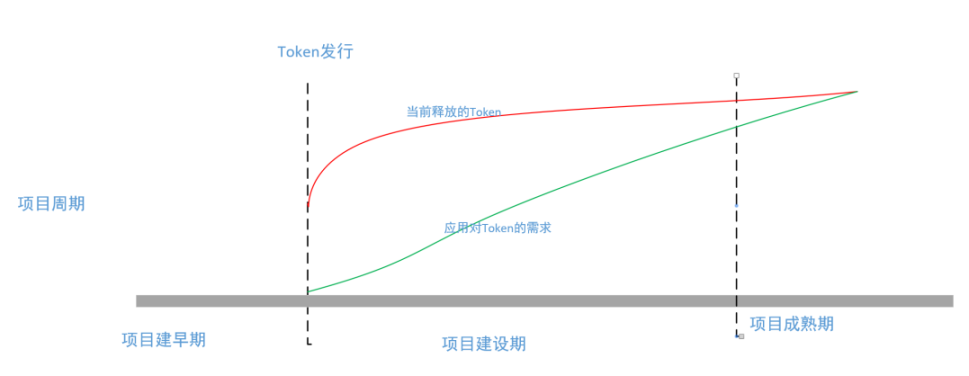
The token released by the project is too early, that is, the part between the red line and the green line, needs to use the liquidity locking function and cannot be taken away by a certain stakeholder in advance.These locked tokens and project progress during construction involve management issues.
3. Project governance issues
In Web3 projects, the most direct control is achieved by the design of consensus mechanisms and economic models.Use the Token in the economic model to control the supply and consumption of resources.The design of economic model plays a very important role in Web3 projects, but this scope of action is limited. When the economic model cannot complete this part of the function, other ways are needed to supplement the places that the economic model cannot reach.The community governance mechanism is a functional supplement to areas that economic models are not good at.
Due to the characteristics of decentralization and the network basis of programming and running rules, the blockchain world has produced community organizations of DAO and DAC, which can compare traditional corporate and corporate governance with centralized structures in the real world.
This part of management combined with DAO and foundation models can better complete the management of funds and ecology, and will also provide sufficient flexibility and transparency.The management members of DAO must meet certain conditions and must include them as soon as possible.Major stakeholders and third-party agencies.If the exchange of listed currency is used as a third party, will it be possible to adopt the suggestions put forward by Jason to have certain supervision and notarization rights and functions of the transaction?In fact, this time, the market maker smashing incident between GoPlus and Myshell, Binance played this role.
Can this management structure also better implement the model proposed by CZ in “A Crazy Idea for Token Issuance”?Let’s take this management concept in CZ as an example for analysis, as shown in the figure below:
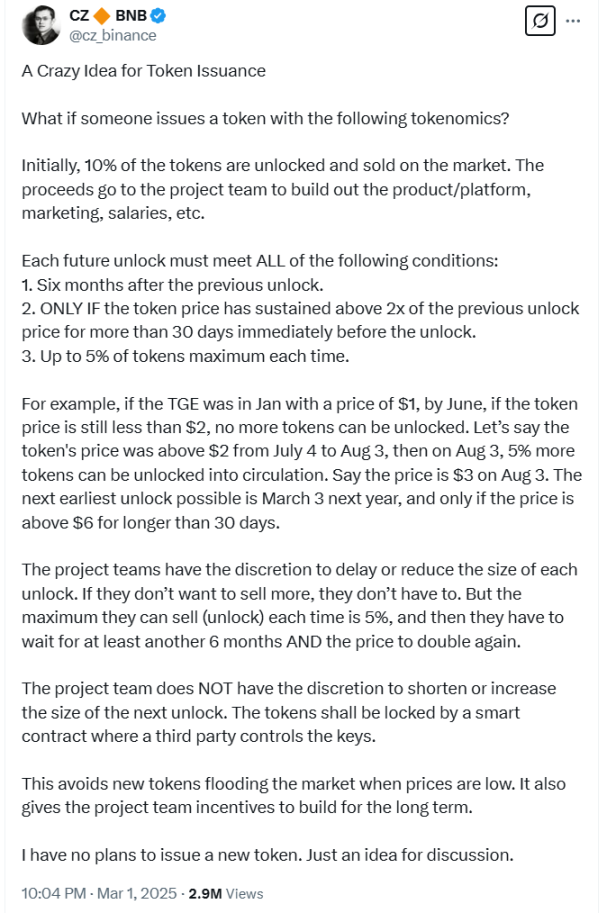
(1) Initially, 10% of the tokens are unlocked and sold on the market.The proceeds will be used for the project team to develop products/platforms, marketing, compensation, etc.(This design is very good. Who will do the management and supervision? This part of the work is handed over to the project’s DAO organization. Is it better to use the treasury and third-party supervision?)
(2) Judgment of several conditions that must be met for each future unlock(This design is aimed at the management of continuous work after the initial period and the management of token liquidity in the later period. If it is handed over to DAO management, the effect will be better.)

(3) The project team has the right to postpone or reduce the scale of each unlock.If they don’t want to sell more, they don’t have to.But each time they can sell (unlock) up to 5% and then they have to wait for at least 6 months and the price doubles again.(This design must be done by a third-party organization like DAO, which will make the team have the right to do it and become DAO has the right to decide on it. Because the project team is also an important member of DAO, it should not cause too many side effects)
(4) The project team has no right to shorten or increase the scale of the next unlock.The token should be locked by a smart contract that controls the keys by a third party.This prevents new tokens from pouring into the market when prices are sluggish.This also encourages the project team to carry out long-term construction.(This design further shows that a third-party institution is needed, which will be more controllable and manageable than smart contracts. In fact, CZ has proposed the concept of DAO from the subconscious mind)
Of course, this is just a case study. Real project governance also includes many aspects. I believe that web3 will gradually improve and broaden the implementation of this solution to this day, and will continue to correct problems and find better specific methods in practice.
4.3. How to build long-term projects (value capture and value injection)
Without cooperating with technological and application innovation, various projects in the industry will not last long after relying on the call-out model.In the end, the problems of VC coins and meme coins reappeared.In fact, pumpfun provides a reference framework. Its explosion and subsequent demise are due to the lack of an important link:Token’s empowerment(also known as value capture and value injection).As shown in the figure below

Based on the above picture, we will see that after VC coins are on the exchange, the project party will get relatively generous returns and will no longer have the motivation to build later.Because later construction not only has great risks, but also does not have enough returns, lying flat is the best choice.But there are some teams with ideals and ability that will continue to build, and there are fewer such teams.Pumpfun’s memecoin mode itself does not have the subsequent token empowerment, so they all run fast in the competition.Why can memecoin like Dogecoin continue to rise?The author believes that there are many reasons and there is a chance to elaborate on it in depth in the future.
How can we have long-term value injection?What are the ways to empower?
Looking back on previous Web3 project cases, such as how the DeFi protocol captures value through liquidity mining, how NFT projects inject external value through royalty mechanisms, or how DAO accumulates value through community contributions.With the maturity of web3 technology, more “application scenarios” can be generated, so that there are more and more connections that can generate value.
Value capture and external value injection are the two pillars of the Web3 economic model. The former focuses on retention and the latter focuses on introduction.More popular terms such as “value accumulation” and “flywheel effect” can better reflect the dynamic combination of the two, while “token empowers “positive externalities” start from the perspective of functional design.
The core challenge is to balance short-term incentives with long-term value and avoid falling into the “paper model” and Ponzi cycle.
5. Crypto’s analysis of the first two bull markets and the possibility of the next outbreak
The previous content analyzes the problems existing in the VC currency and meme currency that are currently more concerned in the industry. Will solving these problems promote the explosion of the next bull market?Let’s first review the two bull markets in 2017 and 2021.
Note: On the one hand, the following content is based on the information query online and draws on communication with DeepSeek and Chatgpt. On the other hand, the author has personally experienced the bull market in 2017 and 2021. Our team is also developing related products of the Bitcoin ecosystem, so the article has added some of its own feelings and judgments.
5.1. The ICO craze in 2017
The bull market in the blockchain field in 2017 is the result of the joint action of multiple factors, including technological breakthroughs and ecological development, as well as external environmental factors.The reasons are summarized based on professional analysis in the industry and classic literature as follows:
(1) ICO (initial token issuance) craze
Ethereum’s ERC-20 standard lowers the threshold for issuing coins, and a large number of projects have been raised through ICO (over $5 billion in annual financing).
(2) Dispute on Bitcoin fork and expansion
The divergence between the Bitcoin community on scaling schemes (SegWit vs. Large Blocks) leads to forks.The Bitcoin Cash (BCH) fork in August 2017 has attracted market attention to Bitcoin’s scarcity and technological evolution.BTC price rose from $1,000 at the beginning of the year to a December all-time high of $19,783.
(3) The rise of the Ethereum smart contract ecosystem
Smart contracts and DApp development tools are mature, attracting developers to influx.The concept of decentralized finance (DeFi) is in its infancy, and early DApps such as CryptoKitties have triggered user participation.
(4) Global liquidity easing and regulatory gap
Global low interest rate policies in 2017 led to funds seeking high-risk and high-yield assets.Countries have not yet improved the regulation of ICOs and cryptocurrencies, and speculation is lacking in constraints.
The bull market in 2017 laid the infrastructure for the industry (such as wallets, exchanges), attracted technical talents and more new users to join, but also exposed problems such as ICO fraud and lack of supervision, prompting the industry to turn to compliance and technological innovation (such as DeFi and NFT) after 2018.
5.2. DeFi Summer in 2021
The bull market in the blockchain field in 2021 is the result of the resonance of multiple factors such as industry ecology, macroeconomics, technological innovation and institutional participation.The reasons are summarized based on professional analysis in the industry and classic literature as follows:
(1) The explosion and maturity of DeFi (decentralized finance)
-
The maturity of Ethereum smart contracts and the launch of the Layer 2 expansion solutions (such as Optimism and Arbitrum) have reduced transaction costs and delays.Causing application outbreaks: Uniswap V3, Aave, Compound, etc., the total value of the DeFi protocol locked (TVL) increased from 1.8 billion at the beginning of the year to 25 billion at the end of the year, attracting a large amount of funds and developers.
-
Yield Farming: High-Aged Returns (APY) attracts retail investors and institutional arbitrage funds to influx.At that time, YF (yield finance, known as uncle-in-law in the industry) was once more expensive than BTC.
(2) NFT (non-fungible tokens) breaks the circle and mainstreaming
-
Beeple’s NFT work “Everydays: The First 5000 Days” was auctioned at Christie’s for $69 million.The market value of NFT projects such as CryptoPunks, Bored Ape Yacht Club (BAYC) exceeded 10 billion US dollars.Opensea and other NFT trading platforms are emerging.
(3) Large-scale entry of institutional capital
-
Tesla announced that it would purchase $1.5 billion in Bitcoin and accept BTC payments.
-
MicroStrategy continues to increase its holdings of Bitcoin (as of the end of 2021, it holds 124,000 BTC).
-
Canada approves the first Bitcoin ETF (Purpose Bitcoin ETF, February 2021).
-
Coinbase is listed directly on the Nasdaq (valuation is US$86 billion).
(4) Global macroeconomic and monetary policy
-
Liquidity flooding: The Federal Reserve maintains zero interest rates and quantitative easing policies, and funds pour into high-risk assets.
-
Inflation expectations: The year-on-year increase of US CPI exceeded 7%, and Bitcoin was regarded by some investors as “digital gold” to hedge inflation.
(5) Mainstream society’s acceptance increased
-
Payment scenario expansion: PayPal supports users to buy and sell cryptocurrencies, and Visa allows USDC to settle.
-
El Salvador lists Bitcoin as fiat currency (September 2021).
-
Celebrity effect: Public figures such as Musk and Snoop Dogg frequently mention cryptocurrencies and NFTs.
(6) Multi-chain ecological competition and innovation
-
The rise of new public chains: High-performance chains such as Solana, Avalanche, and Polygon attract users and developers due to their low fees and high TPS.
-
Cross-chain technology breakthroughs: Cosmos and Polkadot’s cross-chain protocols promote asset interoperability.
(7) Meme Coin and Community Culture
-
Phenomenon projects: Dogecoin (DOGE) and Shiba Inu (SHIB) surged due to social media hype (DOGE has an annual increase of more than 12,000%).
-
Retail investor fanaticism: Reddit Forum WallStreetBets (WSB) and TikTok drive retail investors to enter.
Impact on subsequent markets
The 2021 bull market has promoted the institutionalization, compliance and technological diversification of cryptocurrencies, but has also exposed problems such as DeFi hacking and NFT bubbles.Since then, the industry’s focus has shifted:
-
Regulatory compliance: The US SEC strengthens scrutiny of stablecoins and securitized tokens.
-
Sustainability: Ethereum turns to PoS (merger program), Bitcoin mining explores clean energy.
-
Web3 Narrative: Metauniverse, DAO (Decentralized Autonomous Organization) and other concepts have become the new focus.
5.3. When is the next bull market?2025 ?What will be the theme?
The following is a predictive analysis of the potential bull market drivers of the cryptocurrency market in 2025. Combined with current industry trends, technological innovation and macroeconomic background, the reasons are summarized based on professional analysis in the industry and classic literature as follows:
(1) Web3 large-scale application and user sovereignty rise
Scenario implementation: Decentralized social (such as Nostr, Lens Protocol), on-chain games (AAA-level GameFi), and decentralized identity (DID) have become mainstream, and user data ownership and income distribution models subvert the traditional Internet.
Key events: Meta, Google and other giants integrate blockchain technology and open cross-platform migration of user data.
Related technologies: Zero-knowledge proof (ZKP) and fully homomorphic encryption (FHE) are mature to ensure privacy and compliance.
(2) Deep integration of AI and blockchain
Decentralized AI network: Blockchain-based computing power market (such as Render Network) and AI model training data rights confirmation (such as Ocean Protocol) solve the monopoly problem of centralized AI.
Autonomous Agent Economy: AI-driven DAOs (such as AutoGPT) automatically execute on-chain transactions and governance, improve efficiency and create new economic models.
(3) Global central bank digital currency (CBDC) interoperates with stablecoins
Policy promotion: Major economies CBDCs are launched (such as digital euros and digital dollars), forming a hybrid payment network with compliant stablecoins (such as USDC and EUROe).
Cross-chain settlement: The Bank for International Settlements (BIS) takes the lead in establishing the CBDC interoperability protocol, and cryptocurrencies have become a key component of cross-border payment channels.
(4) Bitcoin Ecological Revival and Layer 2 Innovation
Bitcoin Layer 2 explodes: Lightning network capacity continues to hit new highs and the emergence of the TaprootAssets protocol. The RGB protocol supports the issuance of assets on the Bitcoin chain, and the Stacks ecosystem introduces smart contract functions.
Institutional custody upgrade: BlackRock and Fidelity launch Bitcoin ETF options and mortgage lending services to release Bitcoin’s financial instrument attributes.
(5) Clear regulatory framework and comprehensive entry of institutions
Global compliance: The United States and Europe pass the Crypto Asset Market Act (MiCA) regulations to clarify token classification and exchange license system.
Traditional financial integration: JPMorgan Chase and Goldman Sachs launch crypto derivatives and structural products, and the proportion of pension funds allocating cryptocurrencies exceeds 2%.
(6) Geo-conflict and de-dollarization narrative
Risk aversion demand: Geo-risk risks such as the conflict between Russia and Ukraine and the situation in the Taiwan Strait have escalated, and cryptocurrencies have become neutral settlement tools.
Diversification of reserve assets: BRICS countries jointly issue trade settlement tokens based on blockchain, and some countries’ government bonds are denominated in Bitcoin.
(7) Meme Culture 3.0 and Community DAO
Next-generation Meme Coin: Combining AI-generated content (AIGC) and dynamic NFT Meme projects (such as the AI-driven “Immortal Dog” role), the community decides the IP development direction through DAO voting.
Fan economic chain changes: Top stars such as Taylor Swift and BTS issue fan tokens to unlock exclusive content and participate in revenue sharing.
Note: In order not to leave any relevant possibilities, the above analysis data is retained more.
Through a summary of the bull market in 2017 and 2021, and an analysis of the possibilities of 2025, we can roughly refer to the figure below to make some judgments.

For mode:
The inscriptions of 2023 and the pumpfun phenomenon of 2024 are some phenomena that may break out in bull markets.If the problems of inscriptions and pumpfun themselves can be solved, and more complete models will be generated, it may lead to the outbreak of a bull market in some areas.It is most likely related to issuing assets and trading assets.
For the field:
Produced roughly in two fields: (1)Pure Web3 Domain; (2)The field of combination of AI and web3.
Specific analysis:
Regarding (1) the rise of large-scale application of Web3 and the rise of user sovereignty, I personally judge that the infrastructure is not perfect enough and the wealth effect is not that strong. It is difficult to become the main factor or field of the bull market alone, or it will not become the main factor of this bull market.
Regarding (2) The deep integration of AI and web3, almost everyone has experienced the strength of AI. Will this field produce support factors for a bull market?It’s really hard to judge… I personally prefer it to be a bit early.But it is hard to say in this field. The rapid explosion of phenomena such as DeepSeek and Manus are not novel in the field of AI.What will happen to DeFi under AI-enabled?
For (4) Bitcoin ecological revival and Layer 2 innovation, Bitcoin has good price performance in the bull markets of 2017 and 2021. The current market value of Bitcoin accounts for 60% of the crypto market, and the wealth effect is strong enough. If there is a good model + good technology implementation in this field, the probability of a bull market will be very high.
For (7) Meme Culture 3.0 and community DAO, if meme culture solves the PVP problem and there is a continuous injection of external value, is it possible that it will become a driving factor in the bull market?Judging from the wealth effect, it is difficult.
Others (3), (5), and (6) should accelerate changes and will add icing on the cake to the bull market. The direct factors that produce bull market alone are not strong enough.
If there is a bull market in 2025, the most likely is:
Bitcoin Ecology and Layer 2 Innovation, a new model generated based on the issuance and trading of new assets
The combination of AI and Web3, the transaction model empowered by AI
In addition to judging the fields and models, as for when the bull market will break out, we also need to look at external environmental factors.
The above judgment is purely personal thinking and does not constitute any investment advice.



